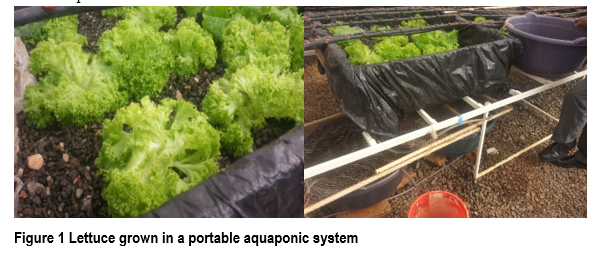ASSESSMENT OF TECHNICAL AND ECONOMIC FEASIBILITY OF A PORTABLE AQUAPONIC SYSTEM
An experiment was conducted in the green house at the Lilongwe University of Agriculture and Natural Resources, Bunda Campus, Malawi, to assess the technical and economic feasibility of a portable aquaponic system made from locally available materials. The experiment used a shallow wooden box (25cm deep and 100cm2 area) as a grow bed. Fine gravel was filled into the box as a growing medium. Two plastic buckets (60 litres each) that held water were used as fish tanks. Oreochromis shiranus was used as a fish species and lettuce (Lactuca sativa) as a crop. The tanks were stocked with 25 fish each with an average initial weight of 8.4g. The fish were fed with formulated pelleted feed containing 30% crude protein. Twenty-one days old lettuce seedlings were transplanted on to hydroponic component. Water was partially (30% of total volume) being pumped twice daily to the hydroponic component by syphoning.
The system sustained life of the fish with a survival rate of 96%. The mean weight gain was 19g and 204g for the fish and lettuce respectively in 42 days. The system showed a positive Gross Profit Margin (52%) for both fish and lettuce. Aquaponics seems to be more commercial and more complex in terms of its technicality but the portable aquaponic system from locally available materials proved to be feasible.
